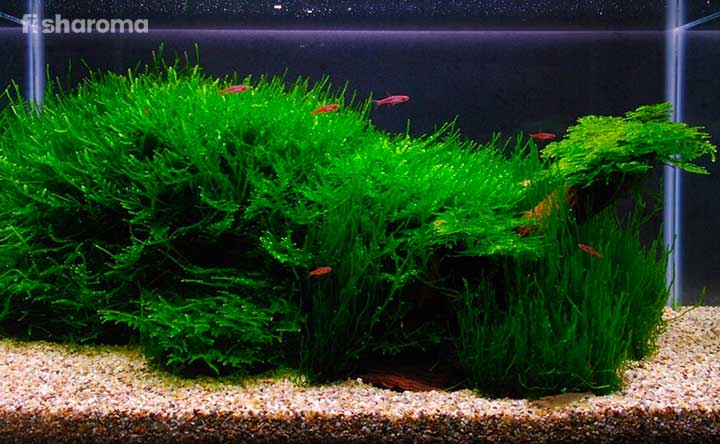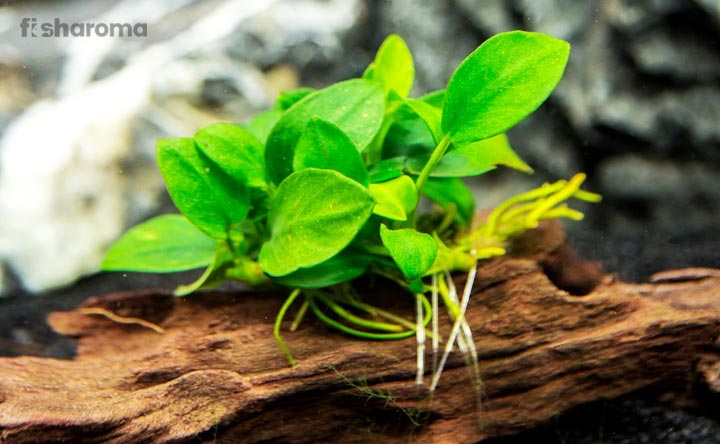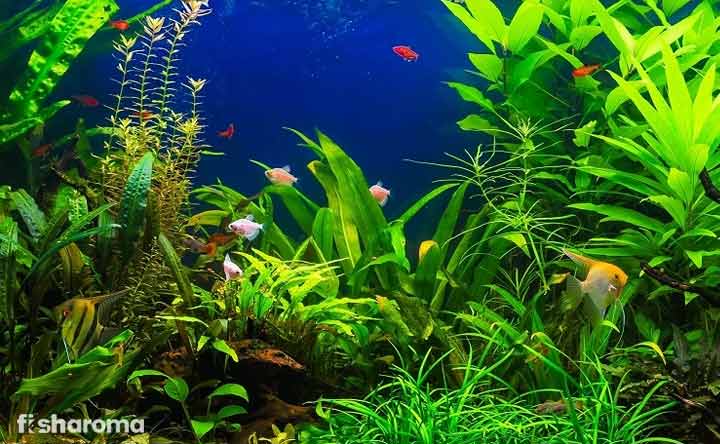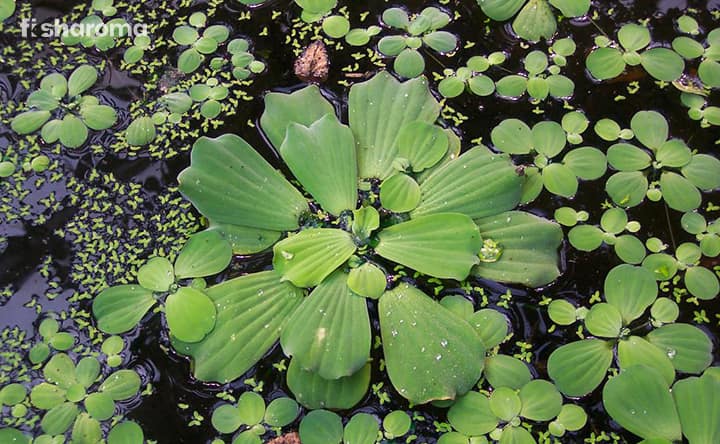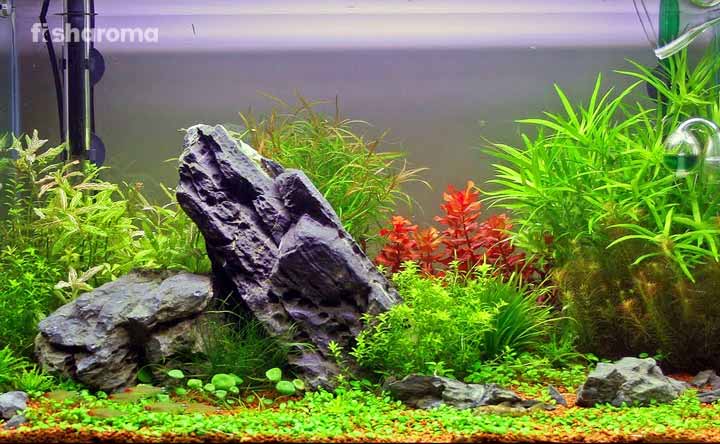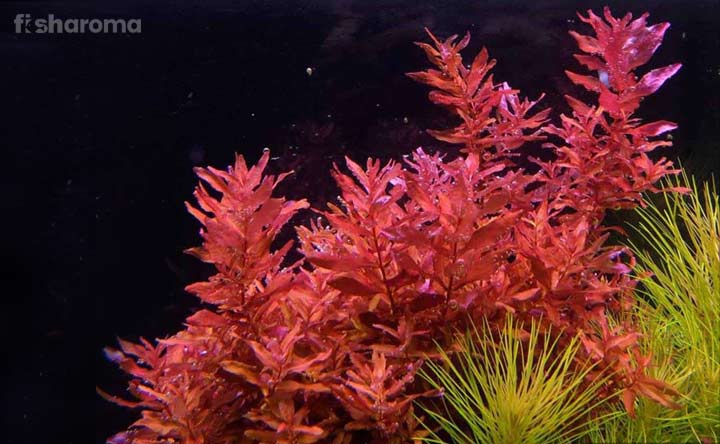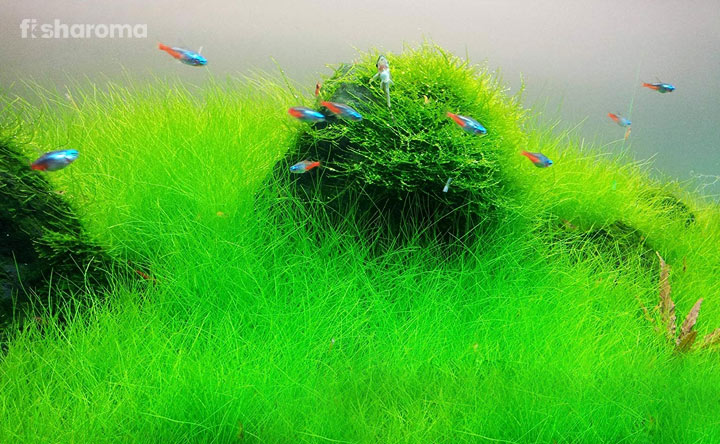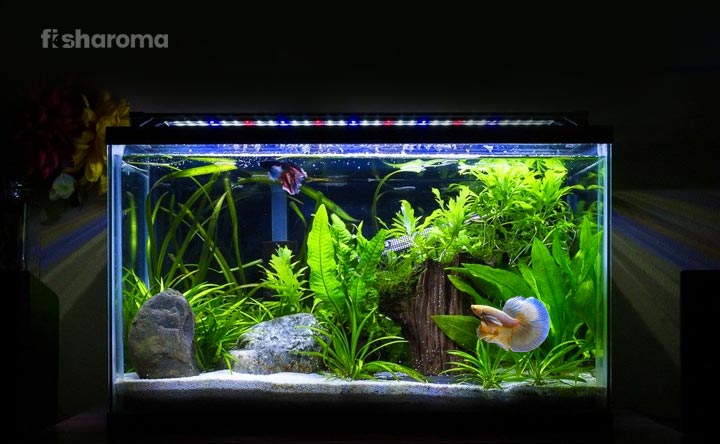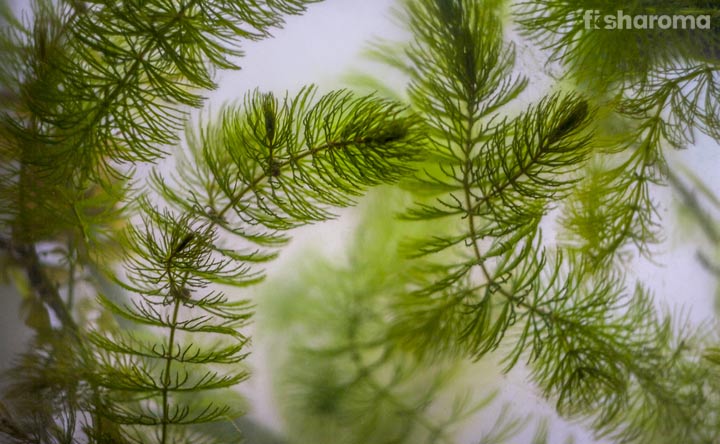Water Sprite Care Guide: The Bright-Bladed Freshwater Plant for Your Aquarium
Having an aquatic plant in your aquarium not only creates a healthy environment but also makes for a scenic view. And when that plant happens to be Water Sprite, the beauty of your aquarium is expanded to a whole new degree. Watching colorful fish swimming in and around it with the beautifully-shaped leaves of this brightly-colored plant is genuinely mesmerizing. Let us learn how to create such an ambiance inside your freshwater tank. We’ll dish out everything you need to know about them in our Water Sprite care guide. So, follow through.
Key Specifications of Water Sprite
Before we bring up the details about the rearing of a Water Sprite plant, you need to take a look at some of its key specifications.
| Scientific Name | Ceratopteris thalictroides |
| Family | Pteridaceae |
| Care Level | Easy |
| Size | 13.5” (34.2 cm) |
| Growth Rate | Slow |
| Tank Size | 10 Gallons |
| Lighting | Moderate |
| Water Conditions | 68-82° F (20-27° C), 6.0-7.5 pH, 3-8 KH |
Overview
Water Sprite is a pan-tropical aquatic plant of the Ceratopteris genus and Pteridaceae family. The intricately-shaped leaves of a Water Sprite plant make them extremely popular among aquarists, especially those who love to have a dash of green in their aquarium or those who exclusively rear aquatic plants.
Another big part of its popularity stems from the fact that it is incredibly diverse since you can place it almost anywhere in the tank. You can keep it floating, or you can even have it planted in the substrate. Besides, they play a significant role in the breeding of various freshwater fish since they serve as a perfect place for fish to lay their eggs.
Some of the other popular names that this hardy plant is known by are Water Fern, Water Hornfern, Oriental Waterfern, and Indian Fern, among others.
Origin & Habitat of Water Sprite
Having an extremely wide distribution across the world, this pan-tropical aquatic plant can be found in abundance in Africa, Asia, Australia, Central America, and South America.
You can spot this freshwater plant in flooded forests, swamps, ponds, marshes, or any other water body that has slow-moving or even stagnant water. They can survive in both sunny as well as shaded areas. They are famous for their high adaptability.
Appearance of Water Sprite
Water Sprites help in giving a lush-green appearance to your freshwater tank. Along with light green leaves, they also have dark green stems that provide a great contrast to the overall appearance.
The leaves of this plant grow from a central stem and extend in a finger-like pattern. Under the right circumstances, you will notice an elaborate tangle of leaves, roots, and stems, especially if you let it float on the water surface. As your plant grows, the leaves overlap one another and look very much like ferns. Their long roots penetrate deep in the substrate in the wild. The longer the roots of your Water Sprite are and the higher the number of roots that there are, the healthier your plant is. When planted to the substrate, the stem of Water Sprite can support the whole plant in an upright position.
Overall, it resembles its terrestrial relatives. Talking about its length, it can grow up to a foot long. In sharp contrast to most other aquatic plants, Water Sprite doesn’t have any rhizomes. Wondering how it propagates then? Well, head to the ‘Propagation of Water Sprite’ section later in this article.
While buying this plant, make sure the plant bears the fresh, bright green color, especially the leaves. Any other color, especially yellow or brown, is a sign of poor health. The leaves shouldn’t curl up on their tips, blades, or margin. Besides, if the plant has fewer roots or short decomposing roots, then you need to avoid buying it as well.
Benefits of Water Sprite
The benefits of Water Sprites are much deeper than the overall beauty that it provides to your freshwater tank. Let’s take a look at some of the benefits of this plant.
- Water Sprites help in cycling your tank.
- They are regarded as one of the best producers of oxygen for your aquatic pets.
- The leaves of this plant can serve as an excellent food source for many species of fish.
- They can provide the much-needed shelter and hiding spots to your aquatic pets.
- When kept as a floating plant, they will provide the much-needed shade to your pets from the intense lights.
- They are also used by fish as an ideal spot for laying eggs.
Tank Requirements for Water Sprite
You must replicate the natural environment for your Water Sprites in your aquarium so that they feel at home even in the captive environment. To help you do that, we are listing all the points you need to bear in mind.
Tank Size
First and foremost, you need to inspect whether your tank is appropriately sized for Water Sprites or not. As they can grow up to a foot long, you need to have at least a 10-gallon tank so that they can easily spread around and thrive.
Nature of Lighting
Water Sprites will thrive best in a moderate-light setting. If there is low light in your tank, the growth of your plant will also slow down. LED lights that resemble a bright day are highly recommended for them. Avoid any source of light that emits harmful UV rays.
Filter
Try to keep the plant away from any power filters in your tank since the tiny delicate leaves of Water Sprite may get sucked into the intake openings of the filter, which will, in turn, clog your filter.
You have to ensure that there is minimal water current in your tank since that is what they are used to living in the wild.
Substrate
The question of substrates arises only when you are planning on keeping it grounded to the base of your tank. In such a case, you are free to use any nutrient-rich substrate you want, as long as they can hold the roots of Water Sprite. Popular substrate choices for them are any sand-based or gravel-based substrate. Ideally, 2-3” (5.0-7.6 cm) of the substrate will suffice for them.
We recommend using a nutrient-based substrate instead of aquarium gravels.
Supplements
Much like any other aquatic plant, Water Sprite will also appreciate any addition of carbon dioxide (CO2) in your tank. You can use trace elements such as the Seachem Flourish Trace Elements.
Cleaning Method
It is of utmost importance that you regularly clean your tank so that your plant and your aquatic pet can grow healthily. Trimming your plant regularly is the primary way of ensuring that your plant doesn’t run wild and is in your desired shape. While trimming the plant, make sure that you trim the outer stems only since any cut to the main stem may lead to your plant dying altogether.
Also, make sure that there aren’t any algae infestations in your tank. So, scrape off any algae that you see. Don’t use any soap-based or chemical-based products since that will pose a threat to the health of your plant. Clean the substrate by vacuuming it and the ornaments by putting them under running water. Use a soft cloth and dip it in lukewarm water to wipe off the interior walls.
Water Type for Water Sprite
Next up in our Water Sprite care guide, we are going to focus on the water parameters that you need to keep in mind to ensure their good health.
Temperature
The temperature of the tank water should be 68–86° F (20-30° C). Install a heater and a submerged thermometer (if your heater doesn’t come with a reading of the temperature reading) to maintain this level of temperature.
pH Level
The ideal pH level of the tank water that hosts Water Sprite should be 5-9.
Hardness
When it comes to the hardness of the water, Water Sprites have a pretty broad tolerance level. So, keep the general hardness anywhere between 2-20 dGH and the carbonate hardness between 3-8 dKH.
Replacement Procedure
Replace around 20% of the tank water every 15 days to ensure that the water doesn’t get contaminated. Even though they live in slow-moving and stagnant water in the wild, there is still a flow that keeps the water fresh. You need to do the same. The new batch of water that you add to the tank should have the same parameters as that of the current batch of the water. The portion of water that you replace will also be decided by which other plant or pet you keep in the tank that hosts Water Sprites.
Plantation Procedure of Water Sprite
As we stated earlier, you can both plant the Water Sprite in the substrate or let it float on the water surface.
If you decide to let it float, it will grow long, thin roots that will suck nutrients from the water itself and will act as a beautiful blanket. These roots will be sources of food (as they trap bits of edible matter in them) and hiding spots for many aquatic pets, especially shrimps. Floating this plant also keeps a check on the population of algae since it provides the shade that helps in prohibiting algae growth. The roots can wrap themselves to other stemmed plants such as Anacharis or porous surfaces such as lava rock.
All you need to do for them to float is to drop the leaves and stem into the water and wait for a couple of days, after which you will notice it growing roots that are hanging down from the plant.
When it comes to planting it, you need to ensure that there is enough space in your tank so that your Water Sprite can grow without overcrowding the tank or blocking the swimming space of your aquatic pets. Start by digging a hole in the gravel and place your Water Sprite in it by gently grabbing its crown (the place where the roots meet the stems). Next, cover the roots entirely with the substrate and cover the base of the stem just a little bit. Don’t bury it too deep while also making sure that it is not planted too high with its roots exposed.
You can place it anywhere in the mid-level to the background of your tank.
Care & Maintenance of Water Sprite
Caring for Water Sprites is reasonably easy since they are easy to maintain. All you need to do is provide the right housing conditions to them and make sure they don’t run wild. So, regularly trim their outer stems. As we have stated above, be extremely careful about not trimming their main stem, since that would lead to their death. The outer stems that you cut off must be removed from the aquarium on an immediate basis; else, they will grow into new plants themselves.
Furthermore, when you introduce the plant to your freshwater tank, you might see there is a nutrition deficiency in your aquarium since they take up too much potassium, phosphorus, and nitrogen. In such a case, feel free to add supplements either in the form of liquid or powder.
Propagation of Water Sprite
Under the right conditions, Water Sprites reproduce quickly. These freshwater aquatic plants reproduce through adventitious shoots, meaning small plants that form from the main plant after breaking off from it. The small plants don’t need your assistance in breaking off.
It means that a single parent can have multiple offspring in a nutrient-rich area. This is why there is a huge chance that there will be overcrowding because of them. To ensure that, remove plantlets as soon as they start sprouting.
Another way through which Water Sprites reproduce is through their stems. If the stem of your plant has been severed and has enough leaves, then it has the potential to grow roots and become an individual plant. If you are intentionally looking forward to adding several plants in your tank, then keep the cuttings a few inches with plenty of leaves.
However, this is suggested for large tanks only since you don’t want to cut off the swimming space of your fish, if you have any. Also, overcrowding the tank is not a great idea. As we said earlier, these plants take too much nutrients from the tank, and you have to supply nitrogen. However, too much nitrogen can lead to a bacteria infestation and result in your plant becoming sick. So, practice caution.
Compatibility of Water Sprite
Water Sprites are highly compatible in community tanks. A bunch of different pants, fish, and invertebrates can co-exist with them peacefully. They provide shelter and shade to your aquatic pets, which are a huge boon to them. Their delicate leaves also trap food particles, which a lot of your pet can enjoy all day long.
Suitable Tankmates for Water Sprite
The suitable tankmates for Water Sprites are as follows:
- Anacharis
- Hornwort
- Java Fern
- Amano Shrimp
- Red Cherry Shrimp
- Tetra
- Glass Catfish
- Cory Catfish
- Killifish
- Guppy
- Molly
- Platy
- Betta
Unsuitable Tankmates for Water Sprite
There are a few species you need to strictly avoid keeping with Water Sprites since they have the potential to eat up your plant. So, the unsuitable tankmates for Water Sprites are as follows:
- Cichlid
- Goldfish
- Snail
Interesting Facts about Water Sprite
- Water Sprite is known as Pakung-Sungay in the Philippines, which means Horn Fern or Antler Fern.
- Despite the fact that it lives only up to a year in the wild, it can live for an indefinite period in a captive environment, such as an aquarium.
- The soft leaves of this plant are one of the favorite foods of Goldfish.
Summary
Water Sprites are hardy freshwater aquatic plants that add the much-needed greenery in your aquarium. From providing shelter to your aquatic pets to giving them shade from the excess light, these plants come with multi-fold benefits. In addition, they are easy to care for and propagate, and their housing conditions are pretty non-demanding. So, if you want to add a naturist aesthetic in your aquarium, go for them.
Care Guides of Similar Aquatic Plants
Take a look at the care guides of some of our other aquatic plants.
- Hornwort – Enjoy the dance of the Hornworts in your aquarium as they sway with the flow of the water to create a majestic look.
- Dwarf Hairgrass – Who doesn’t like a floor of green grass in their aquarium? Acquire the knowledge you need for bringing that look in your aquarium with Dwarf Hairgrass.
- Water Wisteria – They say you can never go wrong with Water Wisterias since they are so easy to maintain. Find out for yourself from here.

